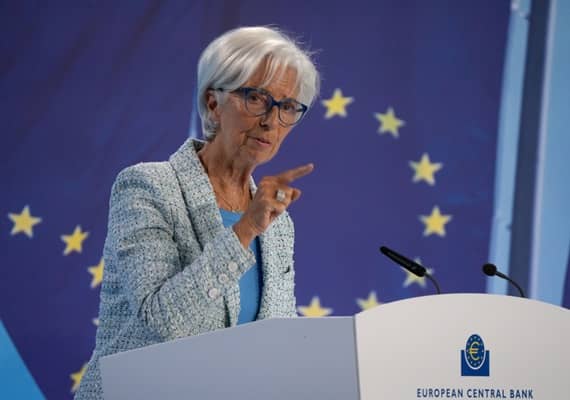Bussiness
Market thoughts: A geopolitical jolt – London Business News | Londonlovesbusiness.com

Digest – Geopolitical developments delivered a jolt to risk sentiment yesterday, sparking a rush into safe havens. Said developments will remain in focus today, amid a quiet data docket.
Where We Stand – For a time, yesterday, it looked like the fourth quarter was set to get off to a relatively quiet start.
That was, of course, until geopolitical developments reared their head again, and sparked a violent cross-asset risk-off move.
The developments in question are Iran’s missile barrage launched towards Israel which, by and large, seemed to avoid significant numbers of casualties on the ground.
Nevertheless, the attack represents a significant ratcheting up of tensions in the Middle East, and seems almost certain to provoke a sizeable Israeli response. Only time will tell whether yesterday’s events result in other major geopolitical players being dragged into a wider conflict.
Those risk-off moves saw a classic haven playbook go into effect, with stocks slumping, as much as 2% in the case of the Nasdaq, while Treasuries caught a sizeable bid, as did the dollar, and gold. Crude, meanwhile, rallied over 5% at one stage, in a classic example of Mr Market’s knee-jerk reaction to any Middle East tensions.
Interestingly, these moves were pared in relatively short order, perhaps suggesting that participants do not have a huge degree of concern over a potential wider regional escalation of tensions. That said, markets will naturally remain hyper-sensitive to incoming geopolitical news flow for the time being.
Elsewhere, the dollar continued its steady grind higher vs. most G10 peers yesterday, with the rally having been given a leg up first by Chair Powell’s Monday comments that the FOMC “is not in a hurry” to cut rates, and then by the aforementioned geopolitical goings-on. The buck’s gains saw the lower yielders in G10 – such as the EUR, CHF, and JPY – underperforming notably.
Underperformance in the common currency was unsurprising given the inline nature of September’s ‘flash’ CPI figures which, at 1.8% YoY on the headline metric, saw inflation fall below the ECB’s target for the first time in over three years, with the print being the slowest pace of annual inflation since April 2021.
Core prices, meanwhile, also cooled, rising by 2.7% YoY, equalling the cycle low seen in April this year. Inflation data of this ilk, coupled with dismal growth figures from the PMI surveys earlier in the week, locks in an October ECB cut, which the EUR OIS curve now discounts as a near-certainty, seeing a 93% probability of such action.
Faster than expected disinflation, and ever-increasing downside economic risks, now make my base case that the ECB deliver cuts at a regular 25bp cadence at every meeting from now onwards, until the deposit rate returns to a neutral level – likely a nominal 2% – early next summer. Such a path sees short EUR vs. the ‘reluctant cutters’, namely the GBP, AUD, and NOK, remain an attractive proposition.
Stateside, Tuesday brought a couple of notable releases.
August’s JOLTS survey showed job openings at a three month high 8.04mln, well above expectations, and topping the Bloomberg forecast range. Chalk this up as another piece of labour market data that doesn’t necessarily chime with the FOMC’s apparent concern over imminent employment weakness.
Meanwhile, the ISM manufacturing PMI remained at 47.2 last month, marginally below consensus expectations. Nevertheless, in promising news for policymakers, the prices paid sub-index slipped to 48.3, back in contractionary territory, and a YTD low. Naturally, though, we await Thursday’s more significant services metric as a gauge of how broad-based the aforementioned disinflation may be.
Look Ahead – Geopolitical developments are set to remain in focus today, with a relatively quiet data docket lying ahead for participants to digest.
Today’s releases focus largely on the labour market – eurozone unemployment is set to have remained at 6.4% in August, while the ADP employment report is set to point to the US having added 123k private sector jobs last month. The relationship, though, between the ADP print, and the official NFP figure due Friday, can at best be described as ‘ropey’, hence the market impact of the figure may well be somewhat muted.
Elsewhere, another busy docket of Fed speakers awaits, including scheduled remarks from 2024 voters Barkin and Hammack, though both are likely to stick to the now-familiar script of data-dependency, and a meeting-by-meeting approach to rate decisions.








